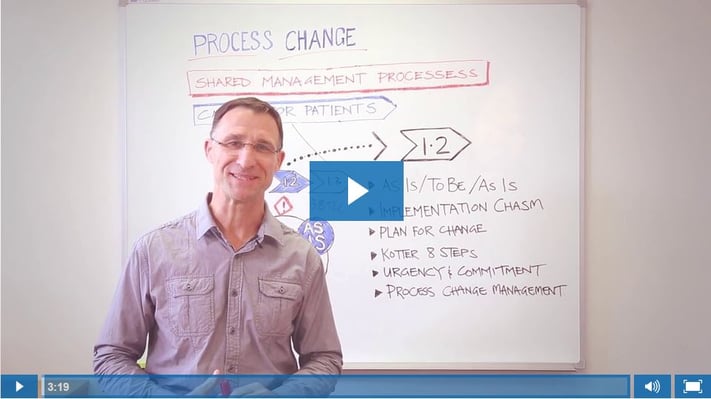The Process Session is a weekly video series posted on The Leonardo Blog that discusses all things BPM and Enterprise Architecture.
Today, Marco talks about Process Change.
Please let us know if you have any ideas for future topics for The Process Session.
Video Transcription - Process Change
Thanks for joining me today in the Process Session for the 7 Enablers of BPM.
So we’ve spoken about Process Architecture – where do you processes live? We’ve talked about how we select the critical few processes and put some measures against them so that we know how they are performing. We’ve talked about Process Governance – what is the role of the process owner and how does that impact on what we do in the process improvement cycle?
Today we are talking about Process Change
Process Change
So Process Change is central to the 7Enablers of BPM. It is key that we understand this, and we embed it. We purposefully embed change into the continuous improvement lifecycle so that we have maximise the benefit through process change management. If we don’t do that, we fail to deliver what we intended.
So the Process Owners have their Process Architecture, they define some key measures, and out of that (depending on the circumstances – external or internal to the organisation) they drive change for business improvement. We kick off the process improvement lifecycle looking at the AS IS (may or may not), we define a TO BE (nearly always), and then come up with a list of this TO DO to make that change successful. Often we forget to embed change management into this process. We then have a high risk of failure and not succeeding of the goals we set out with.
We always want to go a ‘BBTU – Business Better than Usual’. Sometimes we fail, sometimes we succeed. In order to maximise successes, we ensure that we plan for change and embed a change model into the continual improvement cycle (Kotter’s 8 Steps). We avoid this ‘Implementation Chasm’ by doing so. Kotter’s 8 Step program is really broken down into 3 phrases. The first phase is creating a climate for change –developing a sense of urgency and ensuring that the organisation is ready for that change you are going to implement through the processes that are going to impact on the people & systems aligned to that processes. The second is making sure the organisation is engaged and comes along in that model. The third is embedding that process change management so we achieve the change.
Next time we talk about the process mindset – and we will want to understand how we engage people to change their thinking, so when they come to their workplace every day, they are looking for ways to improve the process.





